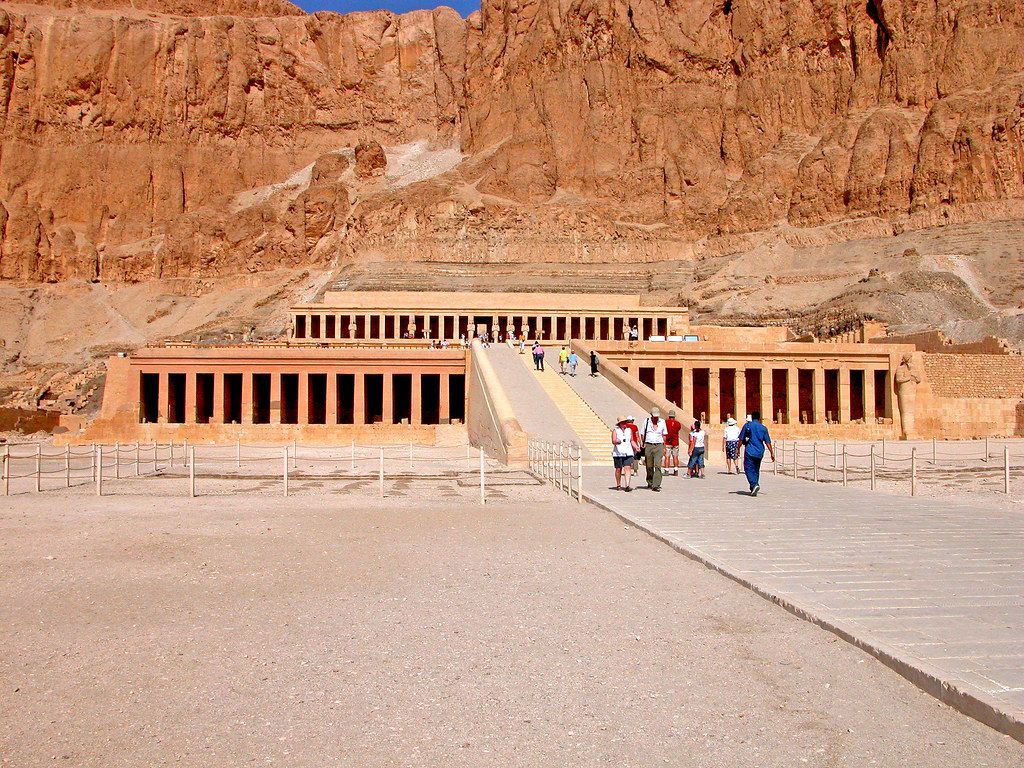
We all love the icons, don’t we? Yosemite’s majestic Half Dome, Zion’s towering sandstone, and the sheer, breathtaking scale of the Grand Canyon—these natural wonders have rightfully earned their place in our hearts and on our Instagram feeds. They represent the pinnacle of America’s wild beauty, drawing millions of awe-struck visitors each year, making them household names for any aspiring adventurer.
But let’s be real: sometimes, those millions of visitors can make a day at the park feel less like a serene wilderness adventure and more like a crowded theme park, especially when you’re stuck in traffic trying to catch a glimpse of Old Faithful. As overtourism becomes a growing concern for many travelers, a new kind of adventure calls—one that promises solitude, untouched beauty, and a chance to truly connect with nature without the elbow-to-elbow crowds.
That’s where America’s unsung heroes come in: the underrated national parks. These are the places that often fly under the radar, overshadowed by their more famous neighbors or simply tucked away in remote corners of the country. Yet, they offer experiences just as profound, landscapes just as stunning, and adventures even more authentic. If you’re ready to ditch the queues, emphasize the ‘wild’ part of your next wilderness adventure, and embrace the remote, join us as we embark on a journey to uncover some of the most spectacular, least-visited national parks that deserve a top spot on your anti-social bucket list.

1. **Lassen Volcanic National Park, California**
California is filled with some of the most iconic—and crowded—national parks in the nation, including Yosemite, Sequoia, and Joshua Tree. However, one park that miraculously flies under-the-radar is Lassen Volcanic National Park. It’s the least visited in the state, tallying around 500,000 annual visitors, which, for reference, is about nine times less than what Yosemite sees. Talk about an escape from the masses!
Nestled in central Northern California, this sleeper hit has a lot of elements similar to Yellowstone: you’ll find bubbling mud pots, hot springs, and freezing royal-blue lakes. It’s an active volcano, Lassen Peak, though its most recent eruptions took place back in 1917, so there’s (probably) nothing to fear as you trek up the mountain and drink in the views of the majestic Cascade Range.
If you’d rather keep things closer to sea level, you can try paddling on pristine and peaceful Manzanita Lake, or explore the Bumpass Hell area, a hydrothermal hot spot filled with billowing basins and kaleidoscopic springs. Be transported in the otherworldly Painted Dunes at Lassen, a truly unique sight without crossing an ocean. This park offers a chance to see steaming volcanoes and surreal landscapes without the typical crowds.
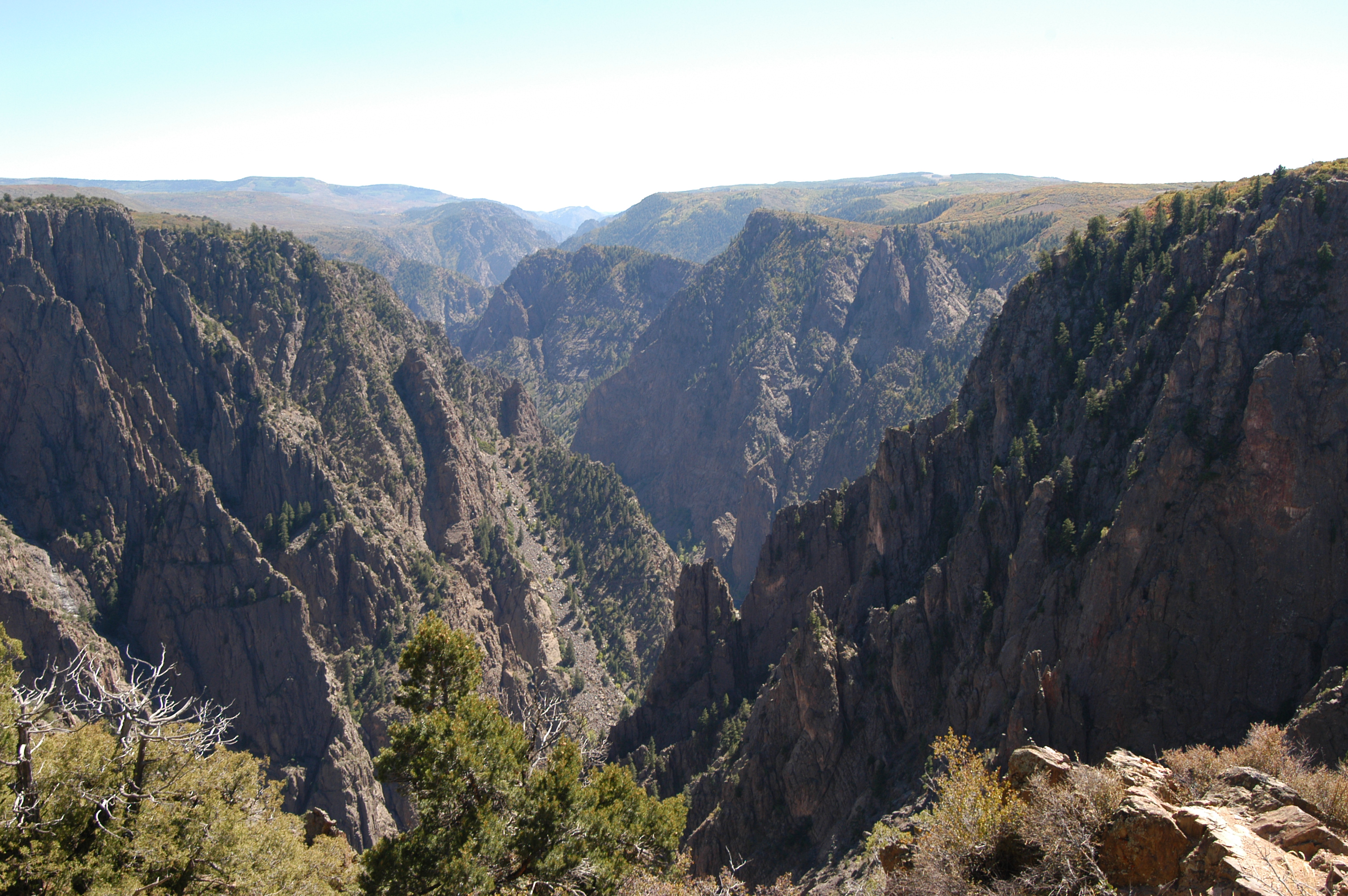
2. **Black Canyon of the Gunnison National Park, Colorado**
Compared to Rocky Mountain National Park, which sees about 4 million more annual visitors, Black Canyon of the Gunnison feels downright sleepy. Located near the quaint town of Montrose in the remote western part of Colorado, this park is the state’s least visited, offering a tranquility rarely found in more popular destinations.
The park gets its name from a canyon so astonishingly deep and narrow—a gash in the ground carved over the course of millions of years by the raging Gunnison River—it’s almost constantly draped in its own shadow. It’s a truly dramatic sight, and the scale is simply immense. You’ll feel like planet Earth got a giant paper cut, and you’re standing right at the edge of it.
For those who don’t fear heights or death, masochistic hikers can brave certain routes down to the canyon floor. But if that sounds like a nightmare, don’t worry: there are plenty of scenic trails and outlooks along the south rim, each offering unique vantage points of this jagged and slim chasm. The north rim is even quieter, hardly getting any visitors since it takes a few hours’ drive all the way around the canyon to access it, but the solitude is well worth the cost of gas. Catch a dreamy sunrise at the Painted Cliff in Black Canyon, and you’ll understand why it’s a hidden gem.
Read more about: Unlocking America’s Angling Goldmines: 15 Secret Fishing Spots Locals Want to Keep Hidden
3. **Congaree National Park, South Carolina**
In the national park Venn diagram between Everglades and Redwood, Congaree National Park is the fascinating overlap. This tiny 26,000-acre park, smack dab in the center of South Carolina, has the murky look and feel of Florida’s Everglades, complete with unnervingly dark water, along with some of the tallest trees east of the Mississippi. The result is a singularly unique park woven with meandering creeks and the namesake Congaree River, which provides a killer backdrop for paddling.
Despite its swampy appearance, it’s actually a massive floodplain; the river routinely floods, carrying vital nutrients down into the roots of skyscraping giants like loblolly pines, laurel oaks, and swamp tupelos. This being flat-as-a-flapjack South Carolina, the trails are all easy, albeit occasionally muddy. It truly is a cathedral of colossal trees draped in Spanish moss, where sunlight filters through a dense green canopy and the air hums with cicadas.
An absolute must is the mud-free elevated Boardwalk Loop Trail, which winds through high-canopy forests so dense it gives the park an eerie, almost ‘Blair Witch Project’ kind of vibe. But don’t worry—the only wildlife you’re likely to see are owls, armadillos, and otters. Congaree National Park also earned UNESCO Biosphere Reserve status for its biodiversity, natural resources, and cultural heritage, and is one of the best places in the Southeast to spot barred owls, river otters, and, in late spring, the surreal synchronous fireflies that light up the woods between mid-May and mid-June. Travel a wilderness path here and prepare to be enchanted.
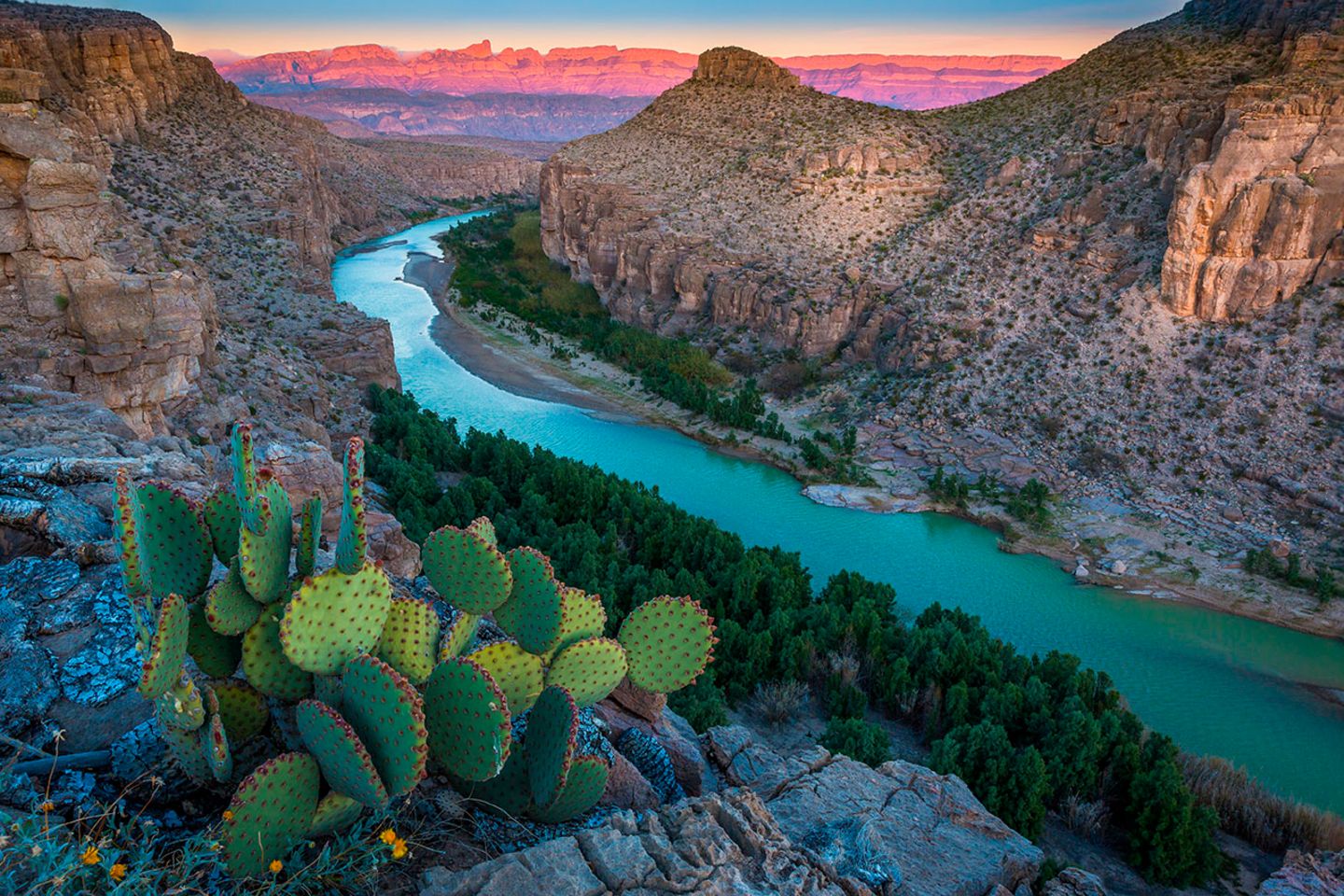
4. **Big Bend National Park, Texas**T
Talk about remote! In far West Texas, Big Bend National Park hugs the Rio Grande River with Mexico just on the other bank—the park is named for, you guessed it, a gigantic bend in the river. Despite the fact that it offers some of the most awe-inspiring backpacking in the U.S., fewer folks visit Big Bend each year than watch the Longhorns play in Texas Memorial Stadium over the course of two or three Saturdays. If that doesn’t scream ‘underrated,’ what does?
If you’re going, you can traverse the high country of the Chisos Mountains, which are the only mountain range completely contained within the borders of a national park, a truly unique geological feature. Or, if you prefer, you can go lower to the trails on the Ross Maxwell Scenic Drive. Alternatively, just spend the day kayaking to your heart’s content on the Rio Grande, taking in the serene desert and canyon landscapes that stretch into Mexico.
Once night falls, prepare yourself for one of the greatest celestial panoramas you’ll likely ever see. Big Bend’s far-flung location gives it the darkest measured skies in the continental U.S. Imagine witnessing the Milky Way in hyper-real glory, far from any light pollution. You’ll have a photo op with sagebrush at the Chisos mountains under an unforgettable starry sky, making it clear why you shouldn’t underestimate West Texas.
Read more about: Beyond the Laughs and Dimensions: Unpacking the Tumultuous Rise of ‘Rick and Morty’
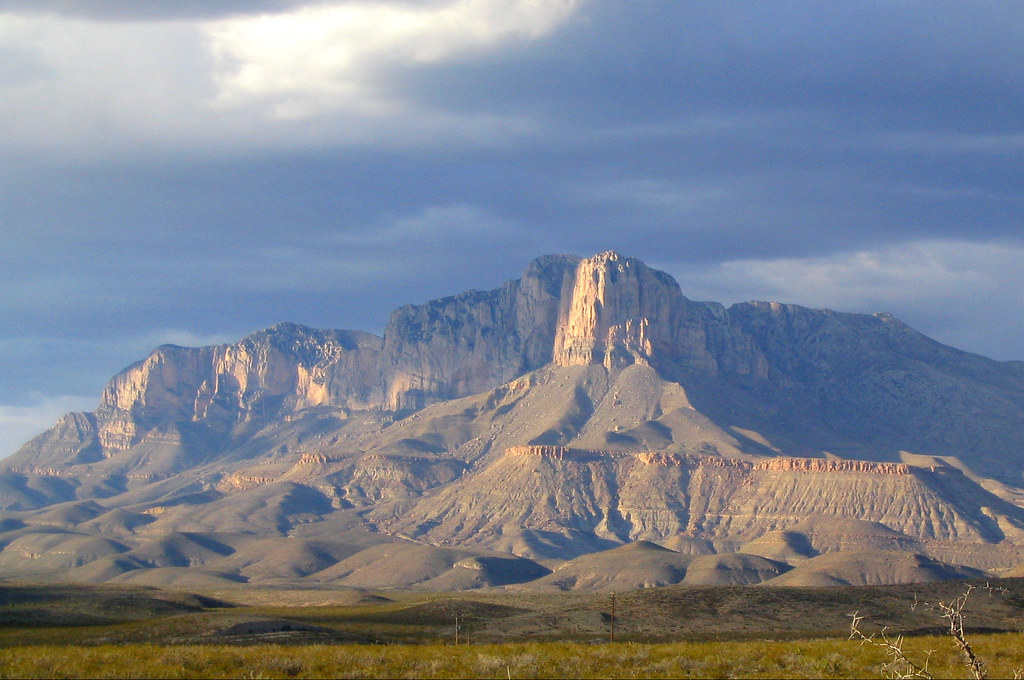
5. **Guadalupe Mountains National Park, Texas**
If you thought Big Bend was underrated, try visiting Texas’ other super-remote national park, which sees about half the annual visitors of Big Bend. Located in the far corner of sleepy West Texas, a stone’s throw from the New Mexico border, Guadalupe Mountains National Park is home to the state’s tallest peaks—plus some 80 miles worth of trails to get you up there. This park truly offers an escape into a rugged, high-desert wilderness.
Guadalupe Peak, for example, is an 8.5-mile roundtrip beast with 3,000 feet of elevation gain and enough endless switchbacks to demoralize even ‘The Rock.’ But the sense of accomplishment—and the sweeping 360-degree desert views—you’ll find at the top of Texas’ tallest mountain are the stuff of bucket list dreams. It’s a challenge, yes, but one that rewards you with unparalleled vistas and a true feeling of being on top of the world.
It isn’t all Olympic-level hiking, though. The diversity in terrain throughout Guadalupe Mountains is striking, from soaring peaks to peaceful springs, foliage-filled canyons, and sand dunes so sugary-white you’d think you were in Pensacola. During the Pleistocene Epoch, the bright-white Salt Basin was covered by a shallow lake, but today it’s dry most of the year, occasionally holding water in the summer. The Basin is covered in gypsum and salt, with nearby dunes consisting of pale red quartz grains, creating a visual feast for any visitor.
Read more about: Unveiling California’s Enduring Grandeur: A Journey Through History, Innovation, and Natural Wonders

6. **Biscayne National Park, Florida**
In south Florida, Everglades National Park tends to absorb all the attention. So while a million annual visitors flock to the larger park, sneak out to an adjoining park with half the traffic—one that’s so underrated and undiscovered that even people living just 45 minutes away in Miami haven’t heard of it. Despite the proximity, Biscayne National Park is a far cry from South Beach, offering an entirely different kind of Florida experience.
At 172,971 acres, 95% of which is underwater, this is a watery wonderland like nothing else in the National Park Service. It’s home to the largest coral reef on the continent and an incredible amount of biodiversity, with 600 species of native fish plus manatees, crocodiles, sea turtles, and birds aplenty. Evidence suggests that humans lived in the area 10,000 years ago, adding a deep historical layer to its natural splendor.
Naturally, this is a park where you need to get out on (or in) the water to truly experience it. Departing from the visitor center marina, Biscayne leads guided tours that range from paddleboarding trips through mangroves in Jones Lagoon to snorkeling at shipwrecks. Stiltsville in Biscayne National Park is not only colorful, it has a colorful history, making it one of the best national parks you’ve never heard of, almost entirely underwater, with shipwrecks, mangroves, and maybe even mermaids.
Read more about: Beyond the Giveaways: Oprah Winfrey’s Jaw-Dropping Car Collection, From Vintage Gems to Modern Marvels!
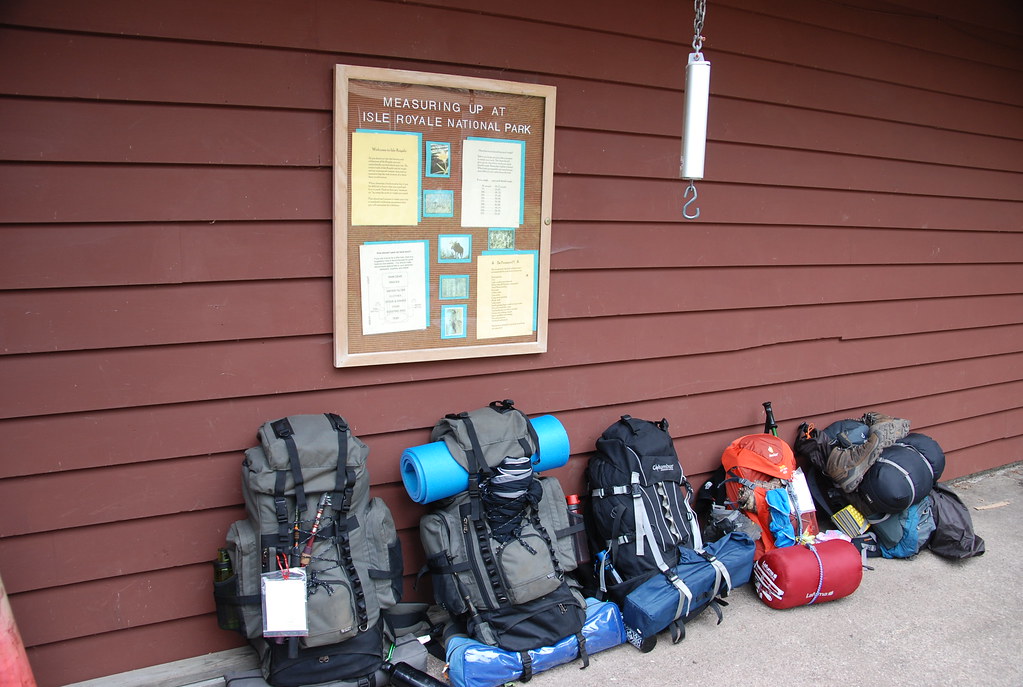
7. **Isle Royale National Park, Michigan**
Because it’s a 45-mile long island in the middle of Lake Superior, accessible only by a three-hour boat ride or a 45-minute seaplane flight, and closed all winter, Isle Royale tallies an ultra-low visitor count. Seriously, more folks visit Yellowstone in a single day than Isle Royale might see in a year. This makes it the ultimate destination for true solitude seekers.
And once you get to this little rock of isolated wilderness, you’ll be handsomely rewarded by seeing nary a soul. That alone makes it incredible for some peace and quiet on a backpacking trip. Hikes will often find you alone on a trail, under fir and spruce trees with serene peeks of the lake. Fishing is a favorite pastime, as is kayaking, and diving with plenty of shipwrecks to explore beneath the clear waters.
Moose are abundant here, as are wolves. Over the past decade, the island’s celebrated pack dwindled to just two wolves, until 2018 when the National Park Service decided to restore the population—and as of spring 2019, the pack was up to 14. Stop in and say hello (you know… from a distance) before continuing along Michigan’s Upper Peninsula, yet another treasure trove of natural wonders most Americans have yet to catch wind of. You’d never guess this stunning national park is not by the ocean!
Okay, so you’ve seen the first seven hidden gems, and your wanderlust is officially on overdrive. But guess what? The adventure is far from over! We’re diving even deeper into America’s unsung national park heroes, bringing you more incredible destinations that prove you don’t need to fight the crowds to find awe-inspiring natural beauty. Get ready to update that bucket list, because these next parks are about to blow your mind and give you all the space you could ever want to explore.

8. **Petrified Forest National Park, Arizona**
If you’re looking for a dose of ancient history served with a side of surreal landscapes, Petrified Forest National Park in northeastern Arizona is your next stop. Here’s a fun fact: there’s nothing actually “petrifying” about it, nor is there really anything “forested” in the traditional sense. Tucked away along a dusty stretch of Route 66 that looks like something straight out of the movie *Cars*, this mysterious 221,390-acre park has so much more to it than first meets the eye. And get this: it sees less than one-fifth of the visitors that the Grand Canyon does each year, which means more space for you to roam!
So, what exactly is a petrified forest? Imagine this: some 200 million years ago, mighty trees stood here, thriving in what was once a tropical forest. Fast forward through time, these ancient giants were washed away by prehistoric rivers, buried under layers of sediment, and then slowly transformed by volcanic ash and silica. Today, those rivers and lush leaves are long gone, replaced by colossal, boulder-sized petrified logs strewn across the arid desert landscape.
These aren’t just old logs; they’re geological masterpieces composed almost entirely of solid quartz, bedazzled by minerals like iron, carbon, and manganese. This mineral infusion gives the logs shimmering tints of purple, green, and a kaleidoscope of other colors, making them truly sparkle in the desert sun. While the hiking trails here are typically short, they pack an immense punch of “wow” factor, allowing you to get up close and personal with these incredible prehistoric gems. It’s an otherworldly experience that will make you feel like you’ve stepped onto another planet, or perhaps back in time!
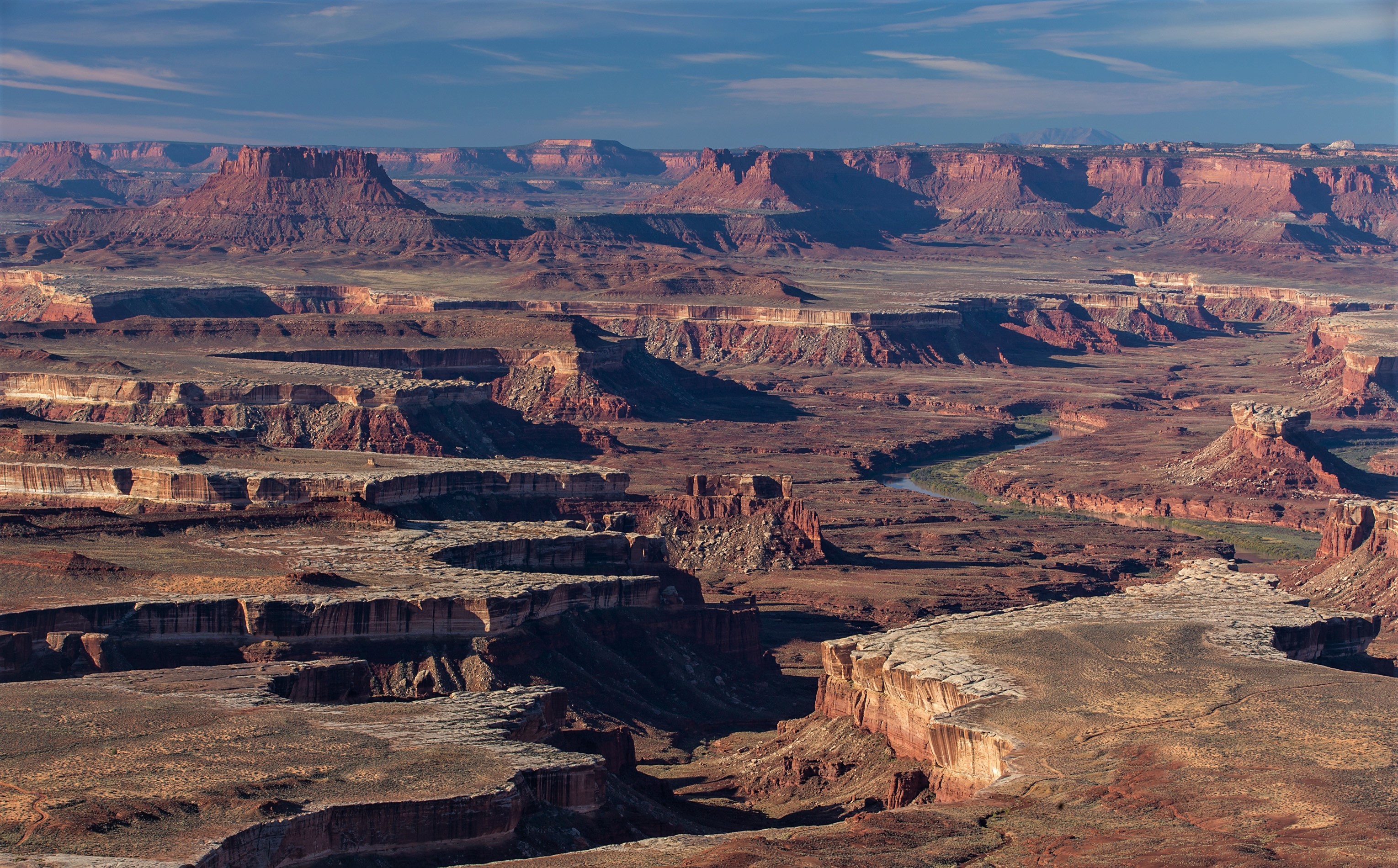
9. **Canyonlands National Park, Utah**
Alright, canyon lovers, listen up! If you’re looking for an epic canyon experience that offers all the grandeur of the Grand Canyon without the gridlock, then Canyonlands National Park in southeastern Utah is calling your name. Located near the charming desert town of Moab, this park shares a lot of DNA with its more famous cousin. Both colossal chasms were carved by the mighty Colorado River, both are high desert meccas of red-hued earth, and both boast endless vistas of a landscape that looks all too otherworldly to exist on this planet. It’s basically the nonconformist, hipster canyon park you’ve been searching for.
For an unforgettable adventure, we highly recommend recruiting a buddy or two, hopping in a 4×4, and driving down White Rim Road. This epic 100-mile trip takes you around and below the mesa top, where you’ll spend hours taking in tremendous Mars-like desert panoramas. All the while, the crowds over at nearby Arches National Park will be stuck in traffic, while you’re enjoying serene solitude. Talk about a trade-up!
If you’re really committed to getting secluded, consider visiting during the wintertime. That’s when the vast landscape morphs into a wonderland of snow-swept mesa tops, often dotted with hoof prints from mule deer—the Utah equivalent of Santa’s reindeer, perhaps? The park is vast, divided into four primary sections: Island in the Sky, the Needles, the Maze, and Horseshoe Canyon, each ripe for exploration. And when night falls, make sure to turn your gaze upward, because Canyonlands is home to some of the darkest skies in the country, offering a celestial panorama that will absolutely take your breath away.
Read more about: 14 Convertibles from the ’60s and ’70s That Made You Feel Like a Movie Star

10. **Wrangell St. Elias National Park, Alaska**
Prepare to redefine your definition of “big” with Wrangell St. Elias National Park in Alaska. At a mind-boggling 13.2 million acres, this colossal park is the nation’s largest—six times the size of Yellowstone, to put that into perspective! And it’s not just about size; it boasts not one, but four major mountain ranges, including nine of the 16 tallest peaks in the US, plus the largest glacial system in the country. Yet, despite its immense scale and jaw-dropping beauty, it only sees about 75,000 annual visitors. This is the ultimate playground for those who truly want to get away from it all.
The sheer scale and diversity of Wrangell St. Elias mean there are endless ways to explore. Imagine trekking on horseback through the wild expanses to glacial river sources, rafting down exhilarating glacial-melted whitewater, or taking a helicopter tour over the massive glaciers of Bagley Icefield, the largest of its kind in North America. Each adventure promises an experience of pure, untamed wilderness.
During your trip here, you’re almost guaranteed to see more caribou, moose, grizzlies, and wolves than you will actual people. It’s a wildlife photographer’s dream and a nature lover’s paradise, where you can feel truly immersed in the raw power of the Alaskan frontier. And unlike many national parks across the country that are best visited in summer, this is one you’ll definitely want to hit in winter too, when the snow-covered landscapes offer a whole new level of breathtaking beauty.

11. **Theodore Roosevelt National Park, North Dakota**
Who knew North Dakota held such a secret? The state is often (and vastly misunderstood) as just flat, rolling grasslands. But then, as if out of nowhere, Theodore Roosevelt National Park appears! Here, where endless grass once stretched to the horizon, craggy, tree-dotted canyons flank the road, petrified forests and river washes spread out between them, and mountains somehow appear like magic. It’s a landscape that challenges all your preconceived notions of the prairie state. (Though, to be fair, the rangers here still say “you betcha,” so some things about North Dakota are correctly understood!)
This incredible park is where the Badlands really start cutting into the landscape, carving sharp rock faces and dramatic hoodoos into the countryside. The night sky here is a spectacle, alternating between a panoramic star show that will leave you speechless and explosive thunderstorms that electrify the horizon. It’s a land where packs of buffalo and wild horses roam with abandon among its river valleys and painted hills, offering a glimpse into the American West as it once was.
Beyond its natural splendor, this park is steeped in history. It’s the only National Park named after a single person, and it was a profound source of inspiration for our bespectacled 26th President, Theodore Roosevelt himself. His experiences here heavily influenced his groundbreaking conservation policies. You can even visit the foundation stones of his Elkhorn Ranch cabin, and perhaps, like Roosevelt, find your own inspiration amidst these beautifully bizarre Badlands.
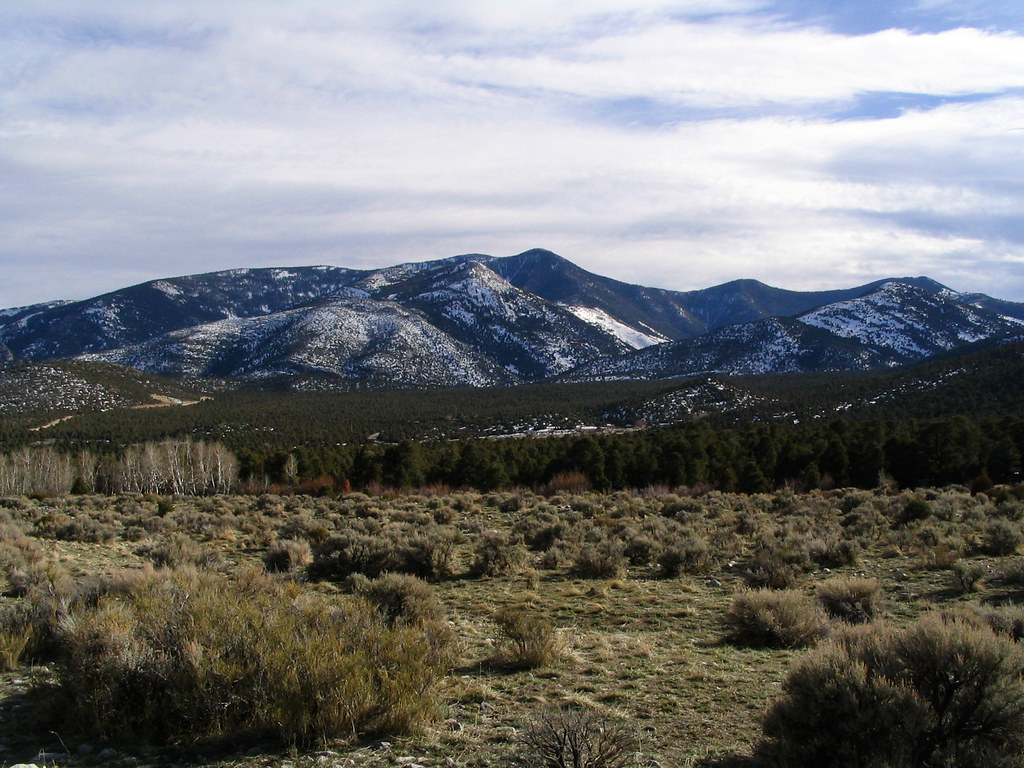
12. **Great Basin National Park, Nevada**
Next time you’re planning a trip to the bright lights of Vegas, consider packing a tent, adding a few extra days to your trip, and heading about four hours up US-93 to Great Basin National Park. This is where you can trade the neon glow of Sin City for the hyper-real shimmer of the Milky Way. If you’re serious about stargazing, you’ll want to stay at the Wheeler Peak campground; at nearly 10,000 feet, you’ll definitely feel the elevation, but the views are worth every lung-busting step. And in the morning, why not hike up to the summit at 13,065 feet? It’s a completely doable trek, even if you partied hard back in LV!
But Great Basin isn’t just about starry nights and mountain peaks. Get ready to have your mind twisted by the ancient Bristlecone pines. These incredible trees are shaped into surreal configurations by centuries of wind, snow, and rain. They’re the oldest non-clonal species on the planet, and having survived countless ice ages and volcanic eruptions, let’s just say they’ve seen some things. These living relics are a testament to nature’s resilience and truly offer a unique photo op.
After exploring the heights, it’s time to delve underground. Take things to the next level (or rather, the lower level!) with a ranger-guided tour of the Lehman Caves. This is the only way you’re allowed inside, so make sure to scope out the tour times beforehand. These subterranean wonders offer a cool contrast to the desert landscape above. And after dark, don’t miss out on taking advantage of those incredible, light pollution-free skies with one of the ranger-led astronomy programs. It’s an unforgettable experience that will connect you to the universe in a profound way.
Read more about: Unpacking America: 14 Mind-Blowing Facts About the USA You Absolutely Need to Know!

13. **North Cascades National Park, Washington**
If you haven’t heard of North Cascades National Park, you’re not alone, but you’re seriously missing out! In the deep-emerald forests near the Canadian border, this park is frequently overlooked in favor of towering Mount Rainier and the lush rainforests of Olympic National Park within Washington’s pantheon of national treasures. However, those in the know hold North Cascades among the country’s greatest natural wonders. It’s often lovingly called the “American Alps” for a reason!
This is a dense, ancient forest landscape that’s absolutely full of surprises. Imagine ice caves carved into glaciers—and North Cascades has more of them than any other U.S. park outside of Alaska! Plus, you’ll find towering cliff faces, stunning opal waterways hidden in the valleys, and an incredibly rugged beauty that will make your jaw drop. Within its remote boundaries, you’ll experience everything that makes the Pacific Northwest so enchanting and wild.
Be prepared for some serious elevation changes and make sure to set aside ample time for exploration. The main road through the park, the one you’ll take to the breathtaking turquoise gem of Lake Diablo, will take you a good six hours driving in and out. But trust us, the effort is well worth it for the views. And whatever you do, don’t leave without seeing those namesake cascading waterfalls, including Colonial Creek Falls, which happens to be the tallest in the continental U.S. With more than 300 glaciers, this park truly lives up to its American Alps reputation.
Read more about: Los Angeles: A Tapestry of Histories, Demographics, and Enduring Challenges

14. **Voyageurs National Park, Minnesota**
Last but certainly not least on our journey through America’s most underrated parks is Voyageurs National Park, located deep in the northern part of Minnesota. It’s so off-the-radar that it seldom even makes *underrated* lists, which is a crime against natural beauty! What those out of the loop are missing is an absolute paradise for lake-lovers, canoeists and kayakers, and stargazers. It truly embodies that lofty promise of 10,000 lakes in Minnesota, with Voyageurs alone boasting over 30, nestled along the US-Canada border. (Pro tip: bring your passport, as you may unwittingly float into a new country!)
This park is a watery wonderland, broken up and divided by a series of interconnected waterways that the early voyagers used as a means of transportation. Imagine a massive chain of islands dotting these waterways, decorated by giant cliffs and gushing waterfalls. It’s a truly unique ecosystem that encourages exploration by boat. But don’t think it’s all about the water; there are twenty-seven miles of trails to explore on land, revealing petroglyphic evidence of inhabitants going back over ten thousand years.
Voyageurs National Park preserves over 400 archeological sites and counting, plus sixteen historical sites on the National Register. That includes the captivating Ellsworth Rock Gardens, featuring rock sculptures by creator Jack Ellsworth, which have been compared to the works of modern masters. And for those visiting in the colder months, keep your eyes peeled on clear nights – lucky visitors often have the opportunity to see the Aurora Borealis, also known as the northern lights, dancing across the sky from the park. It’s an ethereal sight that will make you glad you ventured to this incredible, often-forgotten corner of the country.
There you have it—a grand tour of 14 incredible national parks that are often overshadowed but undeniably spectacular. From fossilized ancient forests and dramatic canyons that rival the Grand Canyon, to vast Alaskan wilderness and serene island sanctuaries, these parks prove that sometimes the greatest treasures are found off the beaten path. So, if you’re ready to ditch the crowds, embrace true wilderness, and discover places that will challenge your perceptions and fill your soul, it’s time to set your sights on America’s underrated wonders. Your next unforgettable adventure awaits, far from the tourist throngs, promising solitude, breathtaking beauty, and stories you’ll be telling for years to come.

